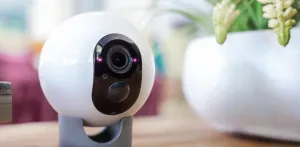Embarking on the Home Security Camera Journey
Remember the time I thought my cat had figured out how to open the refrigerator? Turns out it wasn’t my fluffy feline’s newfound skills— it was a slightly askew fridge door left unclosed by yours truly in the morning rush. That’s when I realized: Maybe, just maybe, having an extra set of eyes around the house wouldn’t be such a bad idea. Whether to catch paranormal pet activities or to keep a watchful eye on the front door, setting up your first home security camera system can be both exciting and daunting.
Let’s walk through this process together, step-by-step, so you can navigate this techie terrain without breaking a sweat (or the bank).
Understanding the Basics of Home Security Cameras
A home security camera system isn't just about slapping some cameras on the wall and calling it a day. There’s a bit more nuance to it, involving types of cameras, storage options, and the ever-important placement strategy. You can get a great head start by checking out this guide to understanding home security camera features.
- Types of Cameras: You’ve got your wired systems, which are reliable but can be a headache to install, and wireless systems, which offer flexibility but might challenge your Wi-Fi bandwidth on movie night.
- Storage Options: Do you go with local storage on an SD card, which might fill up faster than a kiddie pool in July? Or maybe cloud storage, which is super convenient but also adds a monthly fee to your bills?
- Camera Placement: This part is crucial. You want to cover key entry points without turning your living room into a 1980s bank lobby. Here are some placement tips for indoor home security cameras to help guide you.
Choosing the right combination will depend on your specific needs, home layout, and, of course, your budget.
Picking the Right System for Your Home
When I was picking my first home security camera, I’ll admit, I was swayed by a flashy ad with a sleek-looking camera — only to find out it didn’t integrate with my existing smart home devices. Lesson learned. Here are the main points you should consider:
- Compatibility: Get a system that plays nice with any other smart tech you have. If you’re all-in on Alexa or Google, make sure the cameras are compatible. Smart home integration can make managing everything easier.
- Resolution: 4K sounds great, but do you need to see the nose hairs of the jogger passing by your house? Probably not. 1080p usually does the trick and saves on storage space.
- Field of View: A wider field of view will cover more area with fewer cameras. Think about whether you want to surveil your entire backyard or just the porch steps.
- Extra Features: Motion sensors, night vision, and weatherproofing are all worth considering, depending on your paranoia level and local climate.
Not all security cameras are created equal, and neither are our homes. Think about what areas of your home feel vulnerable and how much peace of mind you’re aiming for.
Step-by-Step Installation Tips
Installing these gadgets can either be a DIY enthusiast's dream or a nightmare that ends in a pile of unused screws and mild frustration. Let me save you from the latter with some practical advice I wish I had from the start:
1. Start Small: Don’t try to outfit your entire estate right off the bat. Begin with key areas like front and back doors, or main hallways.
2. Read the Manual: It’s tempting to go rogue, but these manuals are written for a reason. They often contain crucial installation tips tailored to your specific model.
3. Consider Your Wi-Fi: If you opt for wireless cameras, ensure your home Wi-Fi can handle the extra load. There’s nothing sadder than a security camera glitching while you’re trying to figure out if that’s a burglar or just a raccoon.
4. Test Before Mounting: Before you drill holes, test the camera’s positioning with temporary mounts or even just holding it up. You might find that what looked good on paper puts the camera staring at a tree.
5. Security Isn’t Just Digital: Remember physical security, too. Make sure your cameras are mounted out of easy reach and consider placing them under eaves for weather protection and to keep them discreet.
6. Keep It Legal: Be mindful of privacy laws regarding surveillance. No one wants to explain to the police why there’s a camera pointed directly at the neighbor’s window. (taskrabbit.com)
Keeping Up With Maintenance and Updates
Once up and running, your camera system isn't just set-it-and-forget-it. Regular maintenance checks, firmware updates, and adjusting settings are all part of the security gig. Plus, you’ll want to periodically check the lens for dirt and bugs — particularly if you’ve noticed your video feed starting to look like a horror movie fog scene.
Also, think about the security of your security. Regularly changing passwords and ensuring your network is secure from hackers is as crucial as the physical positioning of the cameras themselves.
A Final Note: It’s About Peace of Mind
When I finally had my system up and working, I don’t think I ever actually caught anything more sinister than a squirrel stealing from my garden. But the peace of mind from knowing I could, should something happen, was worth every penny and minute spent installing it.
If you’re on the fence, think of it as less about capturing a bandit mid-burglary and more about extending the vigilant eyes of your household. It’s about making sure that if your fridge door mysteriously opens again, you’ll know whether it was a cold draft, a forgetful moment, or yes, perhaps even a very clever cat.
Security doesn’t need to be invasive or complicated; it just needs to make sense for you. So, take your time, do your research, and create a system that fits your space, your needs, and your life.





